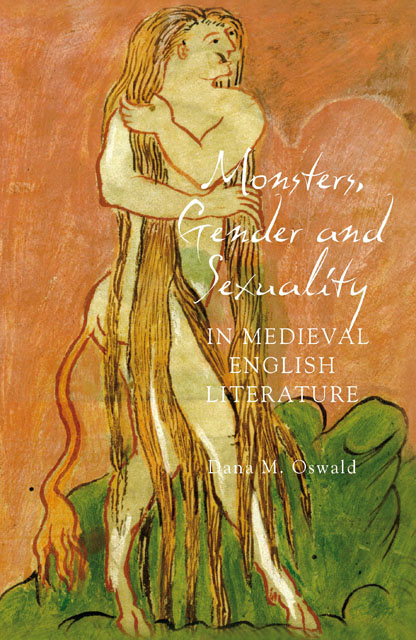Book contents
- Frontmatter
- Contents
- Dedication
- Acknowledgements
- List of Figures
- Introduction: Sex and the Single Monster
- 1 The Indecent Bodies of the Wonders of the East
- 2 Dismemberment as Erasure: the Monstrous Body in Beowulf
- 3 Circulation and Transformation: The Monstrous Feminine in Mandeville’s Travels
- 4 Paternity and Monstrosity in the Alliterative Morte Arthure and Sir Gowther
- Conclusion: Transformation and the Trace of the Monster
- Bibliography
- Index
1 - The Indecent Bodies of the Wonders of the East
Published online by Cambridge University Press: 01 March 2023
- Frontmatter
- Contents
- Dedication
- Acknowledgements
- List of Figures
- Introduction: Sex and the Single Monster
- 1 The Indecent Bodies of the Wonders of the East
- 2 Dismemberment as Erasure: the Monstrous Body in Beowulf
- 3 Circulation and Transformation: The Monstrous Feminine in Mandeville’s Travels
- 4 Paternity and Monstrosity in the Alliterative Morte Arthure and Sir Gowther
- Conclusion: Transformation and the Trace of the Monster
- Bibliography
- Index
Summary
A MAN STARES out from inside the frame of a picture. His hands clutch the right and left sides of the frame, and his feet – five toes on each plus a dog-like dewclaw – balance him on the base of the frame. He has well defined calves and thighs and strong shoulders. Just below his shoulders, however, are his ears. He has no head, but bears all of his facial features – eyes, nose, mouth, and even eyebrows – in his chest [see image 1]. He is completely naked in this image, but his genitals are partially obscured by a darkened spot on the page. Who is he? What is the meaning behind his strange physical formation? All that the text, written above the picture in the Tiberius manuscript of Wonders of the East, reveals about this figure is that there is an island ‘on þam beoð menn akende butan heafdum, þa habbaþ on heora breostum heora eagan 7 muð. Hi syndan eahta fota lange 7 eahta fota brade’ (Orchard, “Wonders” 192) [on which are born men without heads, who have their eyes and mouth in their chests. They are eight feet tall and eight feet wide]. He is clearly monstrous – his body is neither fully animal nor exactly human. His pose seems mildly aggressive, but the text does not mention any dangerous behavior or, indeed, any interaction with humans. How, then, is an audience to respond to this monster? We know the response of one viewer, who covered the figure's groin with a dark ink-splotch. But what is the motivation for this response? Does the desire to remove the genitals from view reflect an aversion to a naked body? A rejection of the monstrous body? I argue that this cover-up does more than conceal nudity or confirm monstrosity; rather, the desire for genital erasure reveals just how human this monstrous body is, and just how dangerous is its sexed body.
The Anglo-Saxon Wonders of the East proves a fertile ground for study of the body in Old English literature precisely because it features both illustrations and written descriptions of the bodies of monsters. These representations of the monstrous are all the more intriguing because illustrated versions of Wonders survive in three different manuscripts.
- Type
- Chapter
- Information
- Publisher: Boydell & BrewerPrint publication year: 2010



